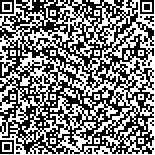| 本文已被:浏览 735次 下载 417次 |

码上扫一扫! |
| 丙酸对山羊小肠上皮细胞糖异生途径关键基因表达的影响 |
|
宁丽丽1,詹康1,霍俊宏4,占今舜4,彭程1,杨天宇1,赵国琦1,2,3*
|
|
|
| (1.扬州大学 动物科学与技术学院, 江苏 扬州 225009;2.扬州大学 农业科技发展研究院, 江苏 扬州 225009;3.扬州大学 教育部农业与农产品安全国际合作联合实验室, 江苏 扬州 225009;4.江西省农业科学院 畜牧兽医研究所, 南昌 330200) |
|
| 摘要: |
| 为探究丙酸对山羊小肠上皮细胞(GIEC)糖异生途径关键基因表达是否有影响,试验分为2个部分:第1部分分为4个处理组,分别添加0、0.75、1.50和3.00 mmol/L丙酸培养GIEC,6 h后收集细胞提取总RNA;第2个部分分为2个处理组,分别添加0和3.00 mmol/L丙酸培养GIEC,培养3、6、12和24 h时,收集细胞提取总RNA。通过qRT-PCR对糖异生途径关键基因的mRNA表达量进行测定。结果表明,0.75 和1.50 mmol/L丙酸对PC、FBP1和PGC1A的mRNA表达量无显著影响(P>0.05);1.50 mmol/L丙酸可显著增加PCK2的mRNA表达量(P<0.05);3.00 mmol/L丙酸可显著增加PCK2和PGC1A的mRNA表达量(P<0.05),还可上调PC和FBP1 mRNA表达量但无差异(P>0.05)。与未处理组相比,3.00 mmol/L丙酸在6 h时可极显著上调PCK2和PGC1A的mRNA表达量(P<0.01),还可增加PC和FBP1的mRNA表达量(P>0.05);在12~24 h对糖异生途径关键基因没有影响(P>0.05)。综上,丙酸可以在山羊小肠细胞中诱导糖异生途径关键基因PCK2、PC、FBP1和PGC1A的mRNA表达,并且PCK2在山羊小肠上皮细胞糖异生途径中发挥关键作用。 |
| 关键词: 丙酸 小肠上皮细胞 糖异生 葡萄糖 |
| DOI:10.11841/j.issn.1007-4333.2021.03.09 |
| 投稿时间:2020-07-02 |
| 基金项目:江苏省自然科学基金项目(SBK2019043455);国家自然科学基金项目(31972589);江西现代农业科研协同创新专项(JXXTCX201702-04) |
|
| Effects of propionate on the mRNA expressions of key genes in the gluconeogenesis pathway in goat intestinal epithelial cells |
|
NING Lili1,ZHAN Kang1,HUO Junhong4,ZHAN Jinshun4,PENG Cheng1,YANG Tianyu1,ZHAO Guoqi1,2,3*
|
| (1.College of Animal Science and Technology, Yangzhou University, Yangzhou 225009, China;2.Institutes of Agricultural Science and Technology Development, Yangzhou University, Yangzhou 225009, China;3.China Joint International Research Laboratory of Agriculture and Agri-Product Safety of Ministry of Education, Yangzhou University, Yangzhou 225009, China;4.Institute of Animal Husbandry and Veterinary, Jiangxi Academy of Agricultural Sciences, Nanchang 330200, China) |
| Abstract: |
| To explore whether propionate has effect on the expressions of key genes in the gluconeogenesis pathway in goat intestinal epithelial cells, the experiment was divided into two parts: The first part was divided into four groups. Firstly, 0, 0. 75, 1. 50 and 3. 00 mmol/L propionate were respectively added to culture GIEC for 6 hours. Then the total RNA was extracted from the collected cells. The second part was divided into two groups. GIEC was cultured with 0 and 3. 00 mmol/L propionate, respectively. The total RNA was extracted from the collected cells at 3, 6, 12 and 24 h after culturing. qRT-PCR was employed for analysis of mRNA expression of key genes in the gluconeogenesis pathway. The results showed that there was no significant difference in the mRNA expression levels of PC, FBP1 and PGC1A with the addition of 0. 75 and 1. 50 mmol/L propionate groups(P>0. 05). The 1. 50 mmol/L propionate significantly increased PCK2 mRNA expression(P<0. 05), while 3. 00 mmol/L propionate significantly increased the mRNA expression of PCK2 and PGC1A (P<0. 05)and upregulated the mRNA expression of PC and FBP1, but there was no difference(P>0. 05). Compared with untreated group, 3. 00 mmol/L propionate significantly increased the mRNA expression of PCK2 and PGC1A at 6 h(P<0. 01), and the mRNA expression of PC and FBP1 was also increased(P>0. 05). There was no effect on the key genes of gluconeogenesis pathway between 12 and 24 h(P>0. 05). In conclusion, propionate can induce mRNA expression of key genes in the gluconeogenesis pathway in goat intestinal epithelial cells, and PCK2 plays a key role in the gluconeogenesis pathway. |
| Key words: propionate intestinal epithelial cells gluconeogenesis glucose |